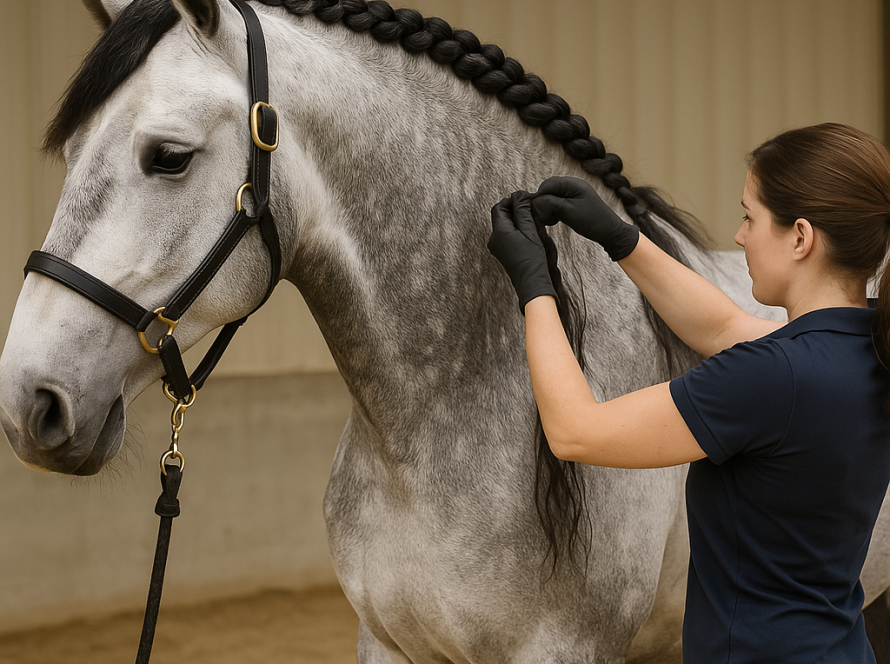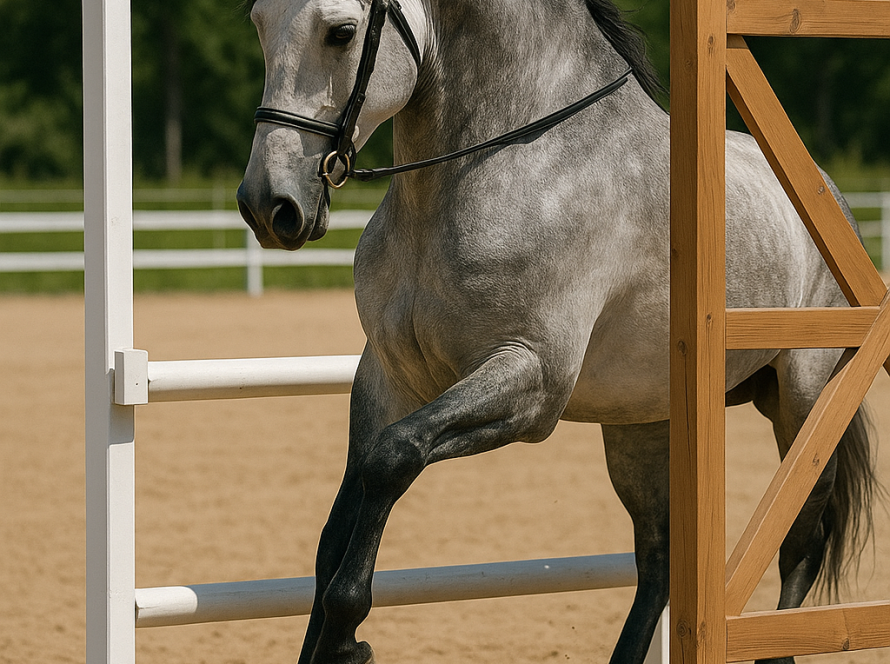In recent years, Working Equitation (WE) has taken the international horse world by storm. Originally developed to showcase the practical skills of Iberian horses in agricultural and ranch work, WE has evolved into a highly competitive sport. For Andalusians and Lusitanos, the discipline feels almost tailor-made—highlighting their agility, intelligence, and natural ability for collection.
This article is a complete beginner’s guide to Working Equitation: how it works, the obstacles you’ll face, scoring rules, and a structured training plan to prepare your horse for competition.
The Origins of Working Equitation
Working Equitation was first formalized in the 1990s in countries like Portugal, Spain, Italy, and France. The idea was to preserve traditional horsemanship skills used by field riders, cattle herders, and classical trainers, while also offering a modern, competitive structure.
Today, the sport is global, with national federations and international championships. The Andalusian World Cup in Las Vegas now features WE classes, drawing riders from across North America and Europe.
The Four Phases of Working Equitation
A full WE competition usually includes four phases:
1. Dressage Phase
-
Similar to classical dressage tests.
-
Focuses on precision, suppleness, rhythm, and collection.
-
Movements include shoulder-in, half-pass, flying changes, and pirouettes.
2. Ease of Handling (EOH)
-
Riders navigate a course of obstacles (10–20).
-
Tests obedience, agility, and partnership.
-
Judged on accuracy, style, and harmony.
3. Speed Phase
-
Same obstacles as EOH, but timed.
-
Encourages boldness, quick thinking, and efficiency.
-
Penalties for knocking obstacles or refusals.
4. Cattle Phase (optional, at higher levels)
-
Teams separate a marked cow from the herd and guide it into a pen.
-
Requires teamwork and cow sense, highlighting the roots of the sport.
Common Obstacles in Working Equitation
Each obstacle mimics traditional ranch tasks but also tests riding precision. Key examples include:
-
Gate: Open and close a gate without losing control of the horse.
-
Bridge: Walk smoothly over a raised platform.
-
Garrocha Pole: Pick up, carry, and place a long pole in designated barrels.
-
Slalom: Weave between poles in trot or canter.
-
Sidepass: Move sideways over a pole on the ground.
-
Bell Corridor: Halt at the end of a narrow lane, ring a bell, then back out.
Scoring System
Judges typically score each obstacle (in EOH) from 0 to 10, based on:
-
Accuracy – Did you complete it correctly?
-
Style – Was it smooth and elegant?
-
Harmony – Was the horse relaxed and obedient?
Dressage is scored in the traditional way, while the speed round is purely timed with penalties.
Why Andalusians Excel in WE
The Andalusian and Lusitano breeds were historically bred for ranch and cavalry work. Their natural traits make them ideal for Working Equitation:
-
Compact build: Helps with balance and tight turns.
-
Natural collection: Easier to perform advanced movements.
-
Bravery: Willing to face new obstacles.
-
Partnership: Strong bond with their riders.
This is why WE has become one of the most popular disciplines for Iberian horses at the Andalusian World Cup.
Training Plan for Beginners
Weekly Schedule (Example)
Day 1 – Dressage Basics
-
Transitions: walk–trot–canter.
-
Lateral work: leg-yield, shoulder-in.
-
Half-halts to improve balance.
Day 2 – Obstacles at Walk
-
Practice gate, bridge, and slalom at walk.
-
Focus on calm, accurate lines.
Day 3 – Pole Work & Agility
-
Cavalletti for rhythm.
-
Sidepass over ground poles.
-
Rein-back between barrels.
Day 4 – Speed Preparation
-
Short obstacle course at canter.
-
Train efficiency: straight lines and quick turns.
Day 5 – Conditioning & Hacking
-
Long trot sets outside arena.
-
Hill work for hind strength.
-
Exposure to new environments.
Day 6 – Review & Relaxation
-
Combine a few obstacles with flatwork.
-
Stretching exercises at trot and canter.
Day 7 – Rest
Tips for Success
-
Keep it fun – Reward your horse after each obstacle.
-
Don’t rush collection – Build balance first.
-
Practice dismounts – In some levels, riders may need to work obstacles on foot.
-
Film your rides – Analyze accuracy and style.
-
Learn the rules – Each federation may have slight variations.
The WE Community at the Andalusian World Cup
At the Las Vegas AWC, Working Equitation classes attract both seasoned professionals and enthusiastic amateurs. The atmosphere is supportive: riders often cheer for each other, and spectators love the drama of the speed phase.
Clinics are also offered, giving newcomers a chance to learn directly from top trainers. For many Andalusian owners, it’s the highlight of the year—a chance to celebrate tradition while pushing their horses’ skills to new levels.
Conclusion
Working Equitation is more than a sport; it is a living connection to the Iberian heritage of the Andalusian and Lusitano horses. From elegant dressage to thrilling speed rounds, it offers something for every rider.
For those attending the Andalusian World Cup in Las Vegas, WE is not to be missed. Whether you’re competing or just watching, the blend of skill, partnership, and tradition makes it one of the most exciting equestrian disciplines of our time.


